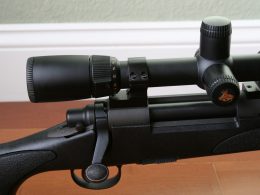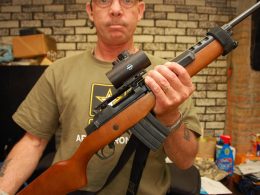In this Article:
Ruger is the largest firearms manufacturer in the United States. Bill Ruger and Alexander Sturm established the corporation in 1949. From 2009 to 2012, the corporation dominated the market for handguns, and they were second only to Remington in the rifle industry. However, with Remington out of the picture, that will likely change. Still, looking at the total number of firearms produced, Ruger comes out on top. That’s for a good reason, trust me.
As a longtime Ruger gun owner, I can summarize the brand in three words: solid construction, reliable operation, and excellent customer support. The Ruger SR1911 Commander is no exception. First, let’s go back in time and learn a little bit about Ruger’s history, and then we’ll take a closer look at this firearm.
BONUS OFFER: Get your free shooting range targets to print at home!
Get your free targets to print at home!
A Quick History
The Ruger Company
Bill Ruger and Alexander Sturm got together in 1949 with the express purpose of building one gun — a .22LR semi-auto pistol. Ruger had gotten hold of a Japanese Nambu WWII pistol or two and had successfully duplicated them into a new design. After teaming with Sturm, they set up shop in a rented machine shop in Southport, Connecticut. He liked the Nambu’s looks, as he did those of the German Luger and Colt Woodsman pistols.
In an effort to combine all three guns into one, they came up with the Ruger Standard — the gun that launched the company. That .22 pistol was so popular that Sturm, Ruger was placed firmly on the firearm manufacturer map. You need to understand that this occurred just four years after the close of WWII. Thousands of men and women came home from the various military branches.
At the height of the war, we had 16 million in uniform, and many of them brought their love of shooting home with them. They did not want to go to war again. They just wanted to do some hunting or informal plinking. Some got into the competition.
Unfortunately, many of them discovered themselves back in uniform when the Korean conflict turned into a full-blown war in June of 1950. But I digress — there weren’t enough civilian fun guns around then. It took a while for manufacturers to gear back up for the civilian market. By designing and selling his Standard pistol, Ruger saw this situation and got a jump on the market.
The Ruger Pistol
The Ruger Standard pistol became known as the Mk I. I owned one of those pistols when I was a band director at a small one-building school corporation and had been there for three years. After I left, my high school band got together as a going-away present and bought me a Ruger Mk I. It was solid, right down to the fixed sights. Here’s what the Mk I looked like.
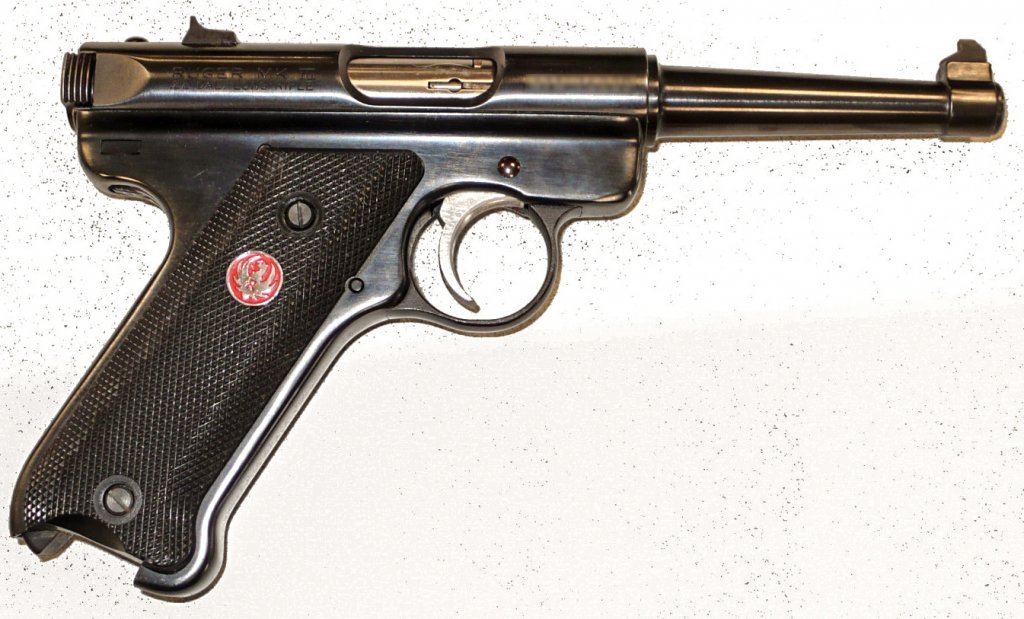
When Alex Sturm died in 1951, the red in the Ruger logo was changed to black. It remained black until it came “out of mourning” in 1999, the 50th year of the company. Original red-logo guns from Ruger’s first couple of years command a premium to collectors.
The .22 pistol was followed by more handguns and rifles, and eventually shotguns were added to the mix. Here are a few tidbits about the company.
- From 1949 to 2004, the company produced over 20 million firearms
- Ruger became a publicly traded company in 1969
- Ruger’s 10/22 rifle has sold more than 6 million since its inception in 1964
- Ruger also makes golf club castings for several brands of clubs, and gun parts for some manufacturers
- Ruger has expanded its manufacturing sites from its headquarter in Connecticut into #North Carolina, New Hampshire and Arizona
- In 2020 Ruger bought Marlin from the Remington Outdoor Company
I have owned several Ruger guns over the years. Those I once (or currently) own(ed) include the above-mentioned Mk. I Standard pistol, a 7.5-inch .45 Colt Blackhawk, a 5.5-inch .45 Colt/ .45 ACP Blackhawk, a 7.5-inch Super Blackhawk, a 4.62″ Single Six .22LR, two 10/ 22 rifles, a Mk. II 22/ 45 (the updated Standard, but with adjustable sights and the grip angle of the 1911, not like the Luger’s grip angle that the Mk. I emulates), and a Ruger American .45 ACP pistol.
These are the ones I remember-there may have been others that faded into the misty recesses of what I used to call my brain. (I could look up old inventories, but you get the point). I have owned enough Rugers from the mid-70’s to now to feel like I know a thing or two about the company and its products.
Ruger SR1911 Commander Specs
| Length: | 7.75" |
| Height: | 5.45" |
| Width: | 1.34" |
| Capacity: | 7+1 (according to the website. It came with two 8-round magazines) |
| Weight: | 34.4 oz. With empty magazine, on my digital scale |
| Barrel: | 4.25" |
| Trigger: | Adjustable overtravel screw. Pull weight averaged 4 pounds, 11.4 ounces |
| Sights: | Drift Adjustable Novak 3-Dot |
| Safeties: | See Other Features |
| Recoil Spring and Rod: | Standard-length rod (not full-length); 16-pound spring |
| Frame and Slide Material: | Stainless steel |
| Grip Panels: | Checkered hardwood, with Allen-head screws |
| MSRP: | $939 |
| Real-World Price: | ~$750 (accurate at the time of writing) |
Popular Articles
Other Features of the Ruger SR1911 Commander
- Original 1911 fire control — no Series 80 trigger. A titanium firing pin and heavy firing pin spring negate the use of the Series 80 construction, which in essence means the gun functions like a 1911A1.
- Safeties include grip, thumb, sear disconnect, slide stop and half-cock position. A visual inspection port lets you see if the chamber is loaded.
- The barrel and its bushing are both produced from the same bar stock on the same machine.
- 1911A1 modifications (mostly) except the flat mainspring housing.
- An oversize ejection port and mag release button help improve function.
- Skeltonized hammer and trigger add to functionality and aesthetics.
- Integral plunger tube for slide release and thumb safety is part of the frame and will not come loose. (I had that happen on an inexpensive imported 1911 I once owned).
- Extended thumb safety (not ambidextrous) and slide release levers aid in functionality and ergonomics.
What is the Ruger SR1911 Commander?
Before we delve into the rest of this opus, let’s see what, exactly, the term “Commander” means in the world of 1911s.
1911s tend to come in one of three basic lengths. By lengths, I’m talking overall length (including barrel length). If the OAL is long, the barrel needs to be long as well. The converse is also true. At any rate, 1911 models have evolved into three different main lengths, with some variation built in. But, the main sub-set sizes are the following.
- GI or Government: Full-sized, 5-inch barrel. Sometimes you will see guns for sale built to original 1911 or 1911A1 specifications. But, by and large, any 5-inch barreled 1911 will be called a full-size or GI model.
- Commander: In 1949, Colt brought out the 4.25-inch Commander 1911. That was a gun with a shorter barrel/slide but still having an 8-round capacity. The 4.25-inch barrel tends to be just a bit easier to carry concealed.
- Officer’s or General’s: These are usually shorty guns with a three- or three-and-a-half-inch barrel, with a matching, bobbed frame that holds six (usually) rounds. These were originally made to give to General officers to be worn for mostly ceremonial events. But, they have gained in popularity with the concealed-carry crowd.
For a quick, more complete history of the 1911 and the .45 ACP, read my review here.
Ruger SR1911 Commander Photos
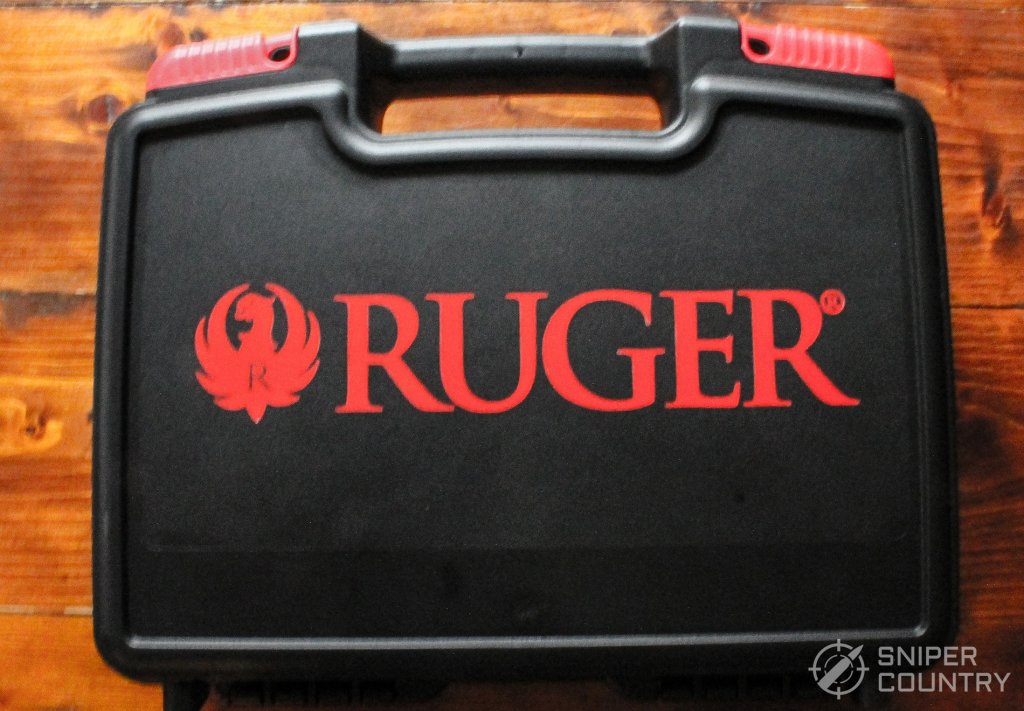
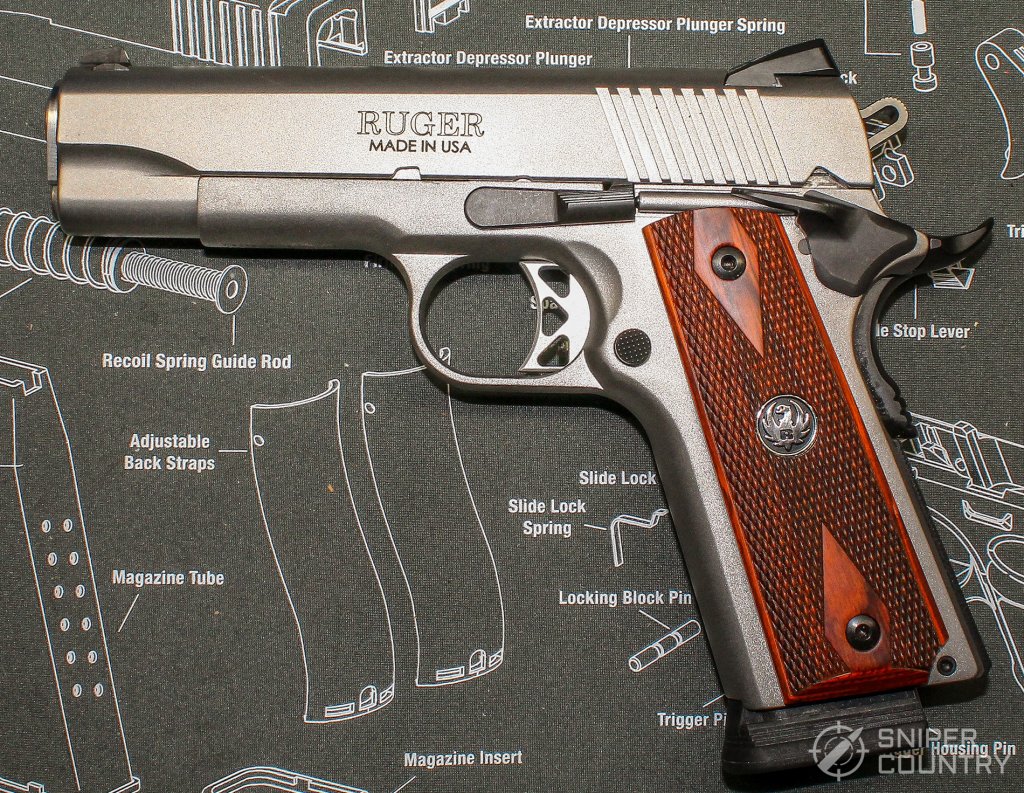
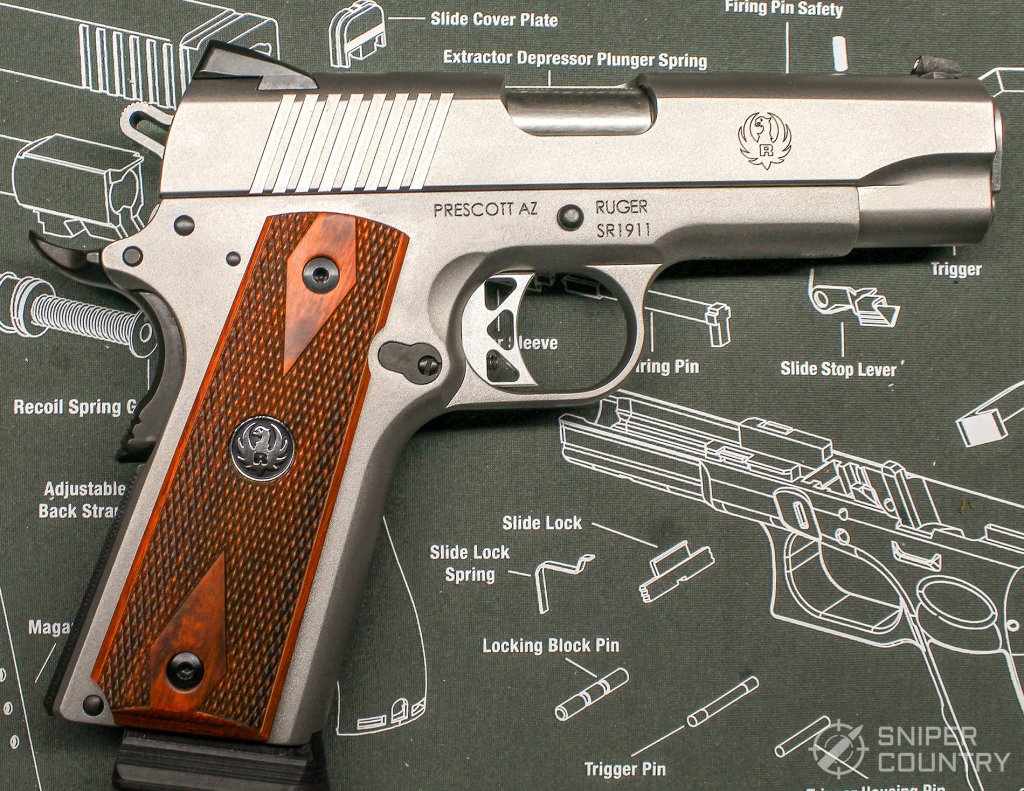
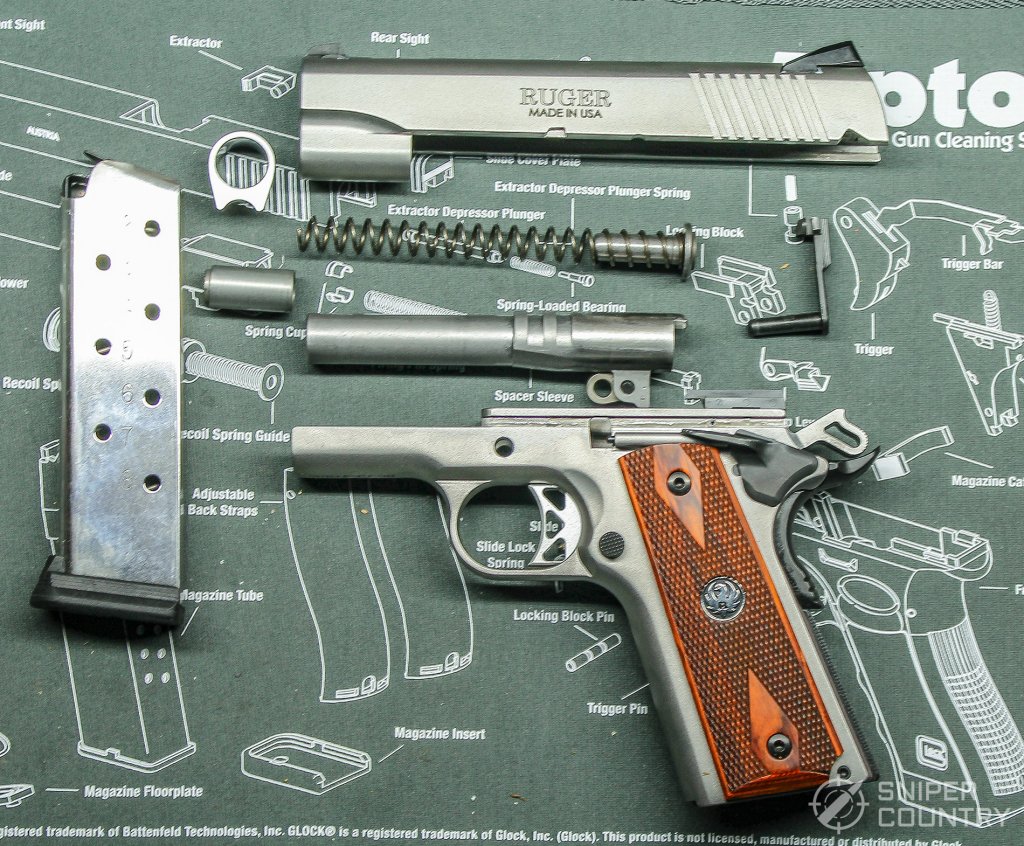
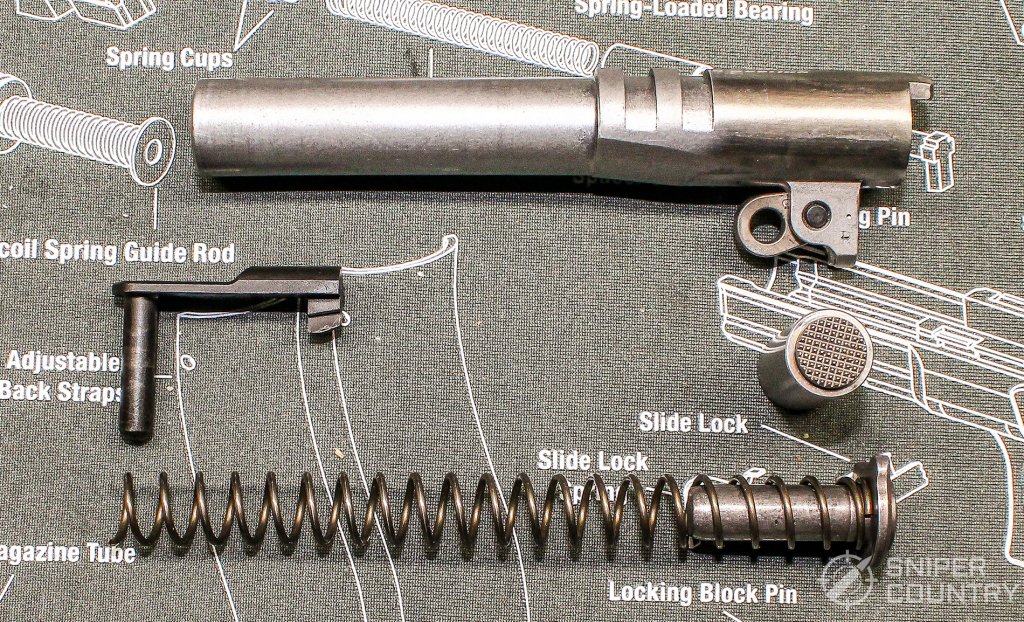
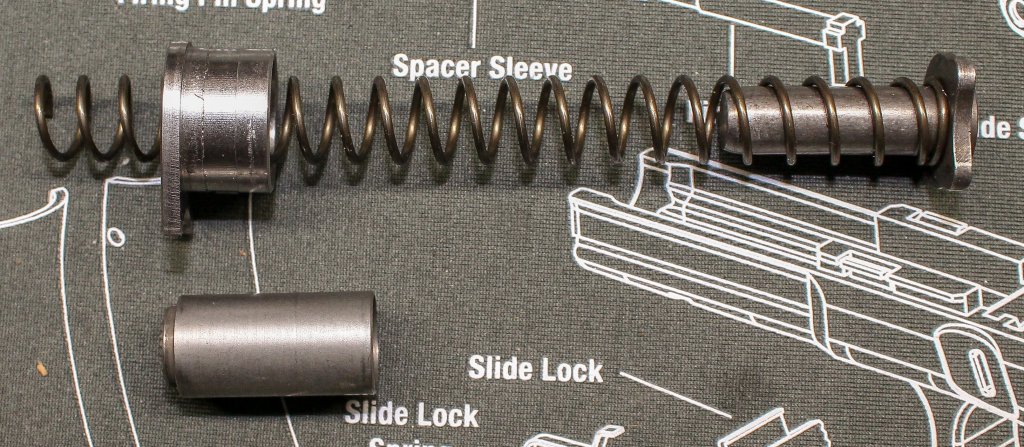
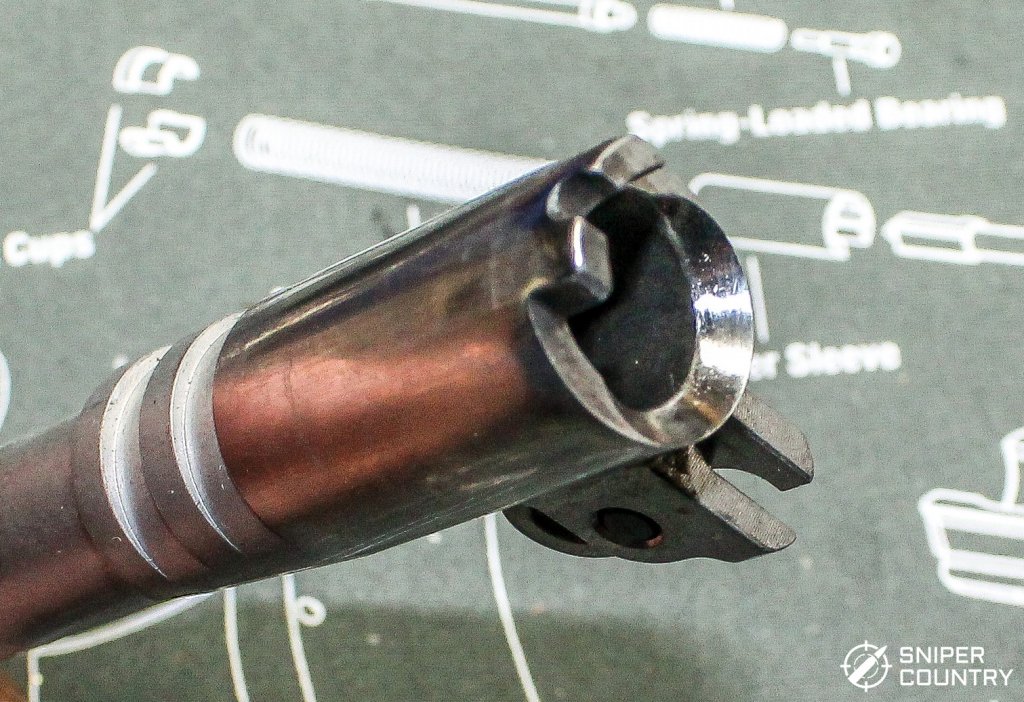
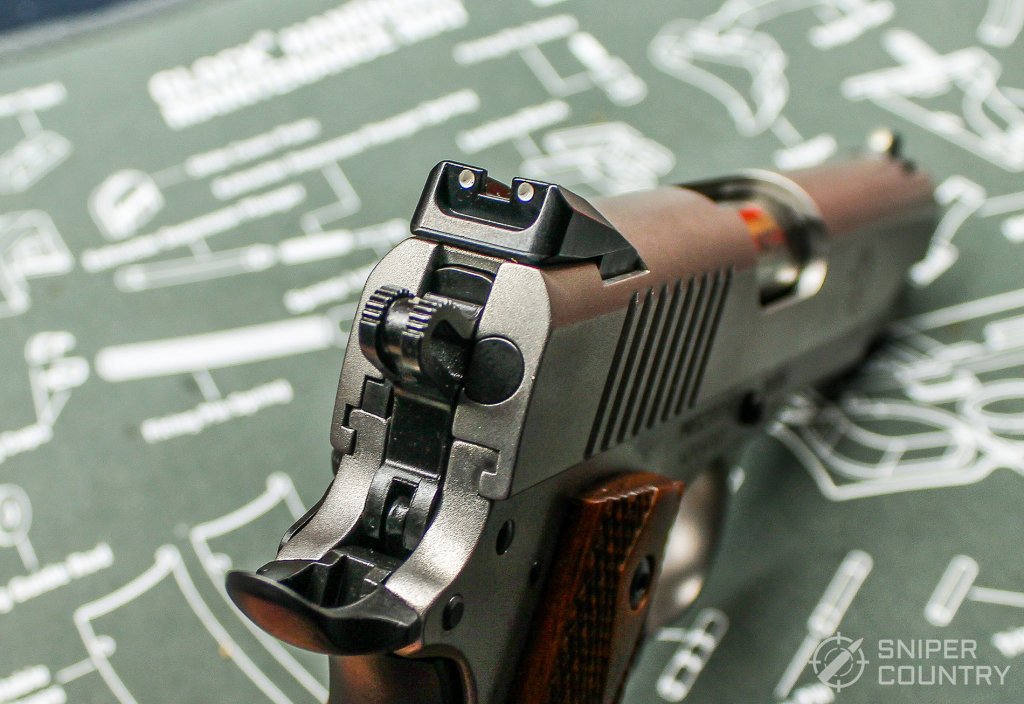
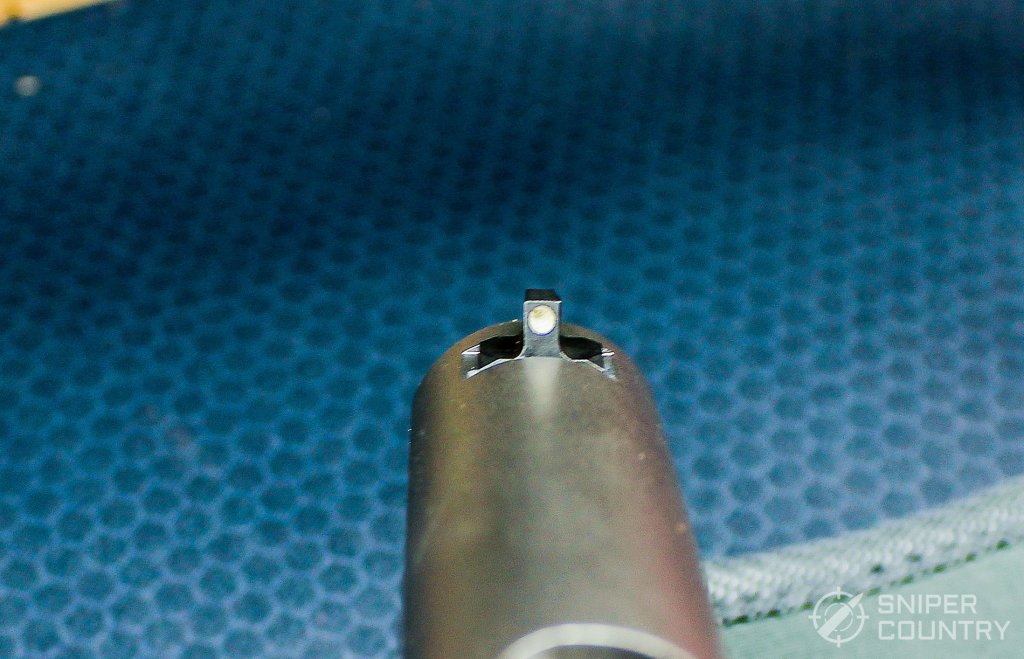
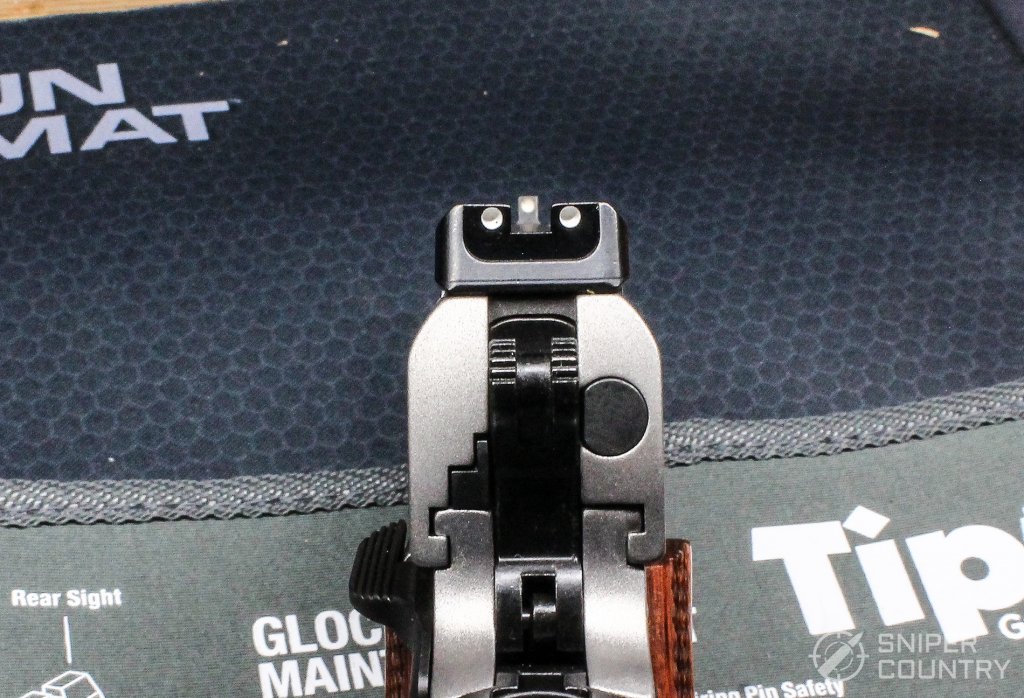



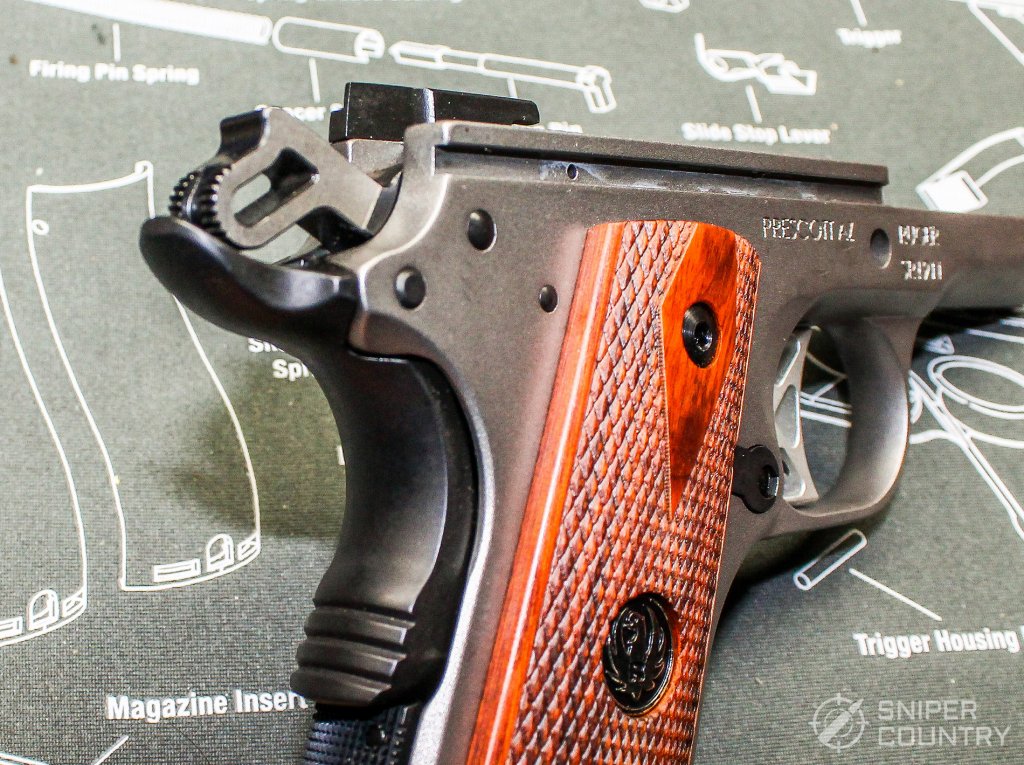
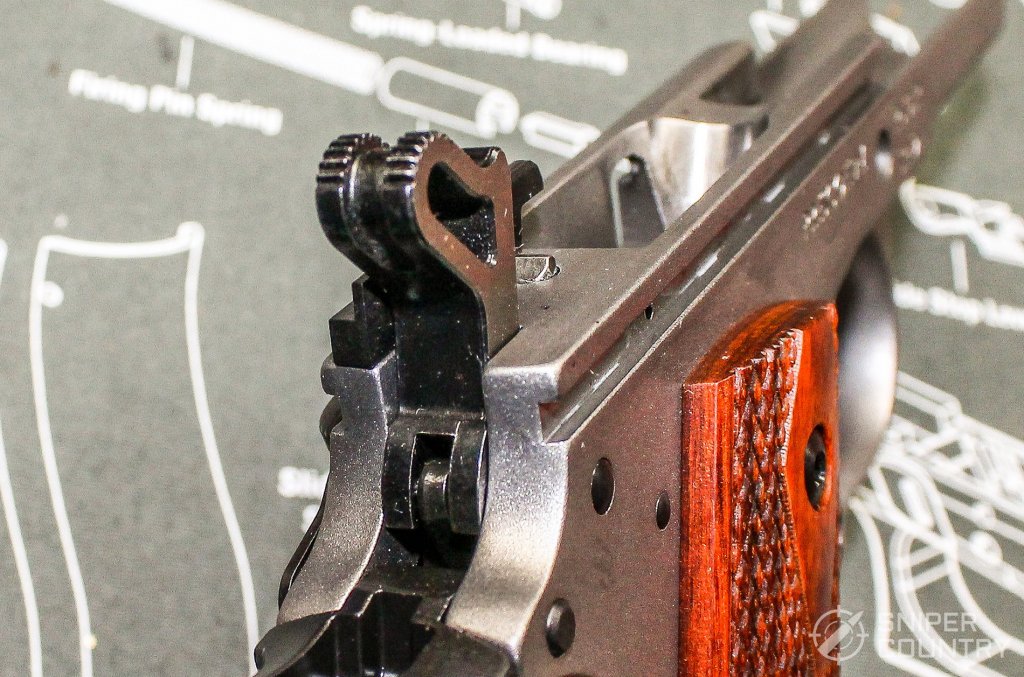
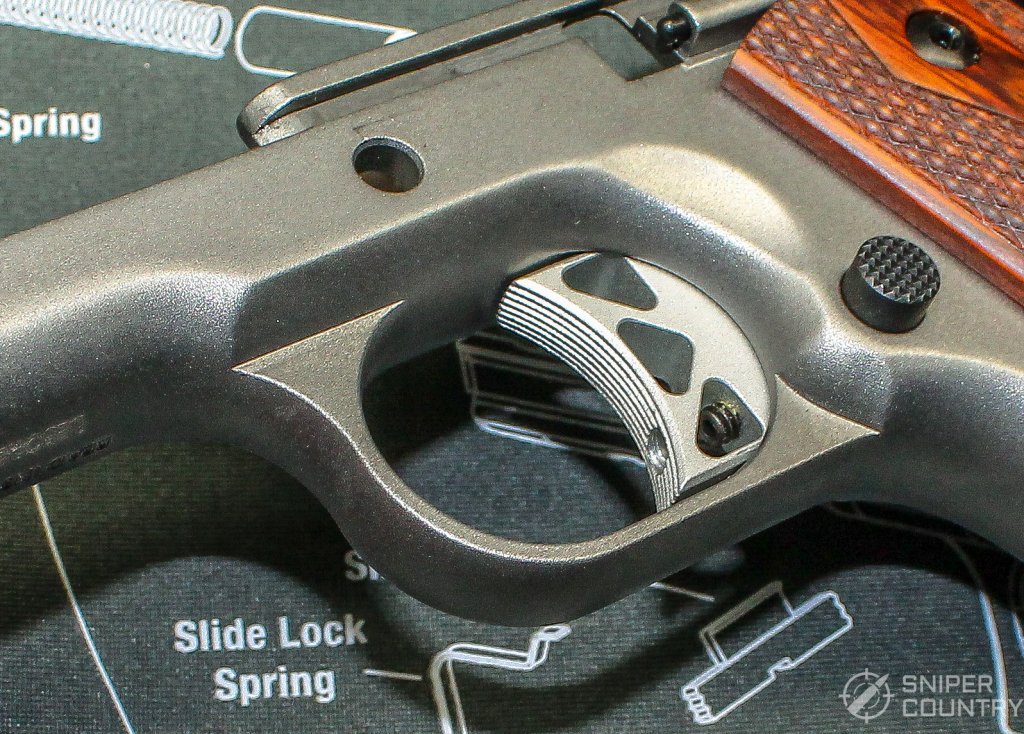

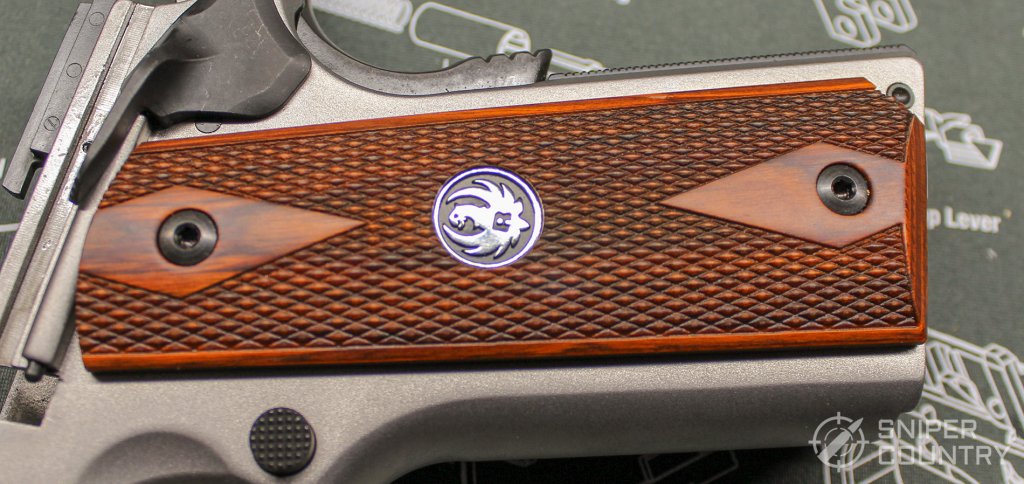
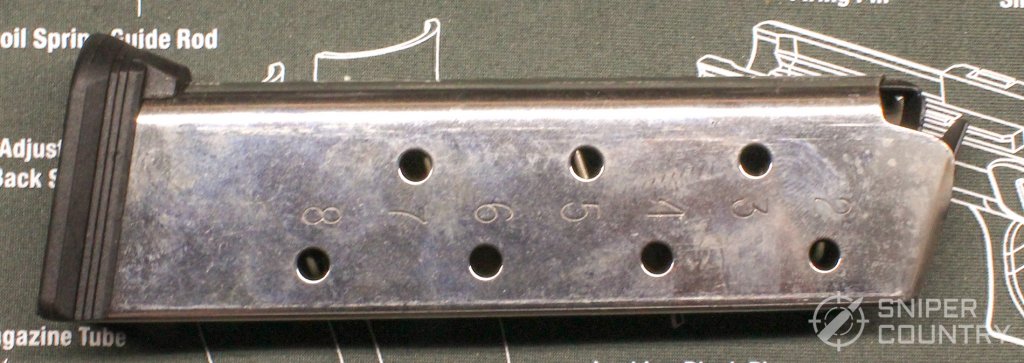
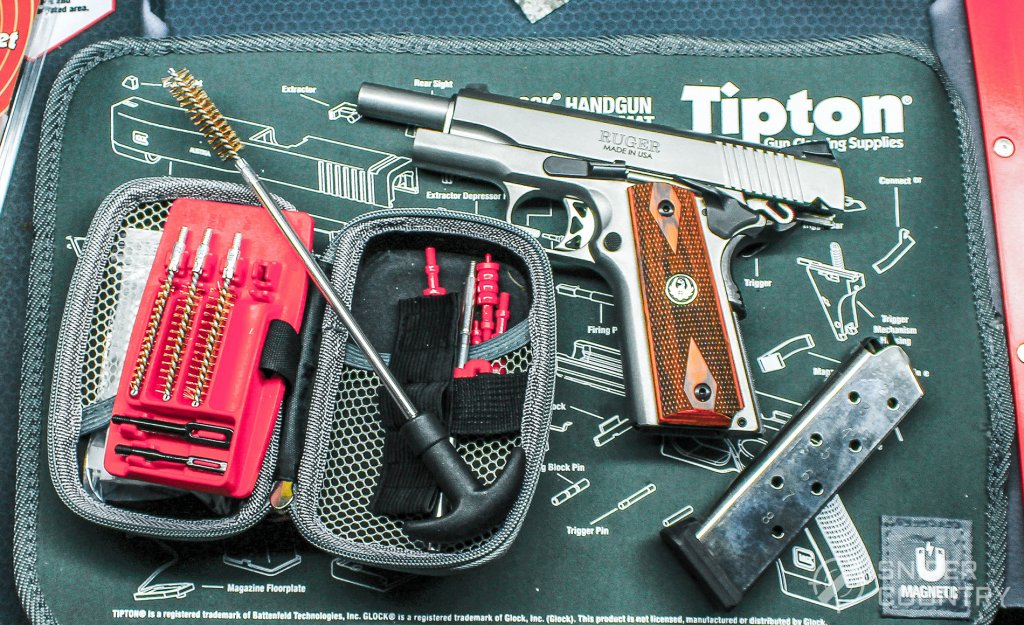
BONUS OFFER: Get your free shooting range targets to print at home!
Get your free targets to print at home!
Ruger SR1911 Commander Performance
I could have gotten this test gun in 9mm, but to me, the 1911 is at least a .45 ACP proposition. (I say at least because the 10mm has found a home in the 1911 family, and welcome it is, too). Every 1911 I’ve owned has felt like an old friend when I’d pick one up. You 1911 fans out there, you understand. There should always be 1911s in gun cabinets.
I do like the 9mm and do own guns in that caliber, as well as reload for it. I just like my 1911s in .45 or 10mm but have only respect for those who want one in 9mm.
Ruger SR1911 Commander Ergonomics
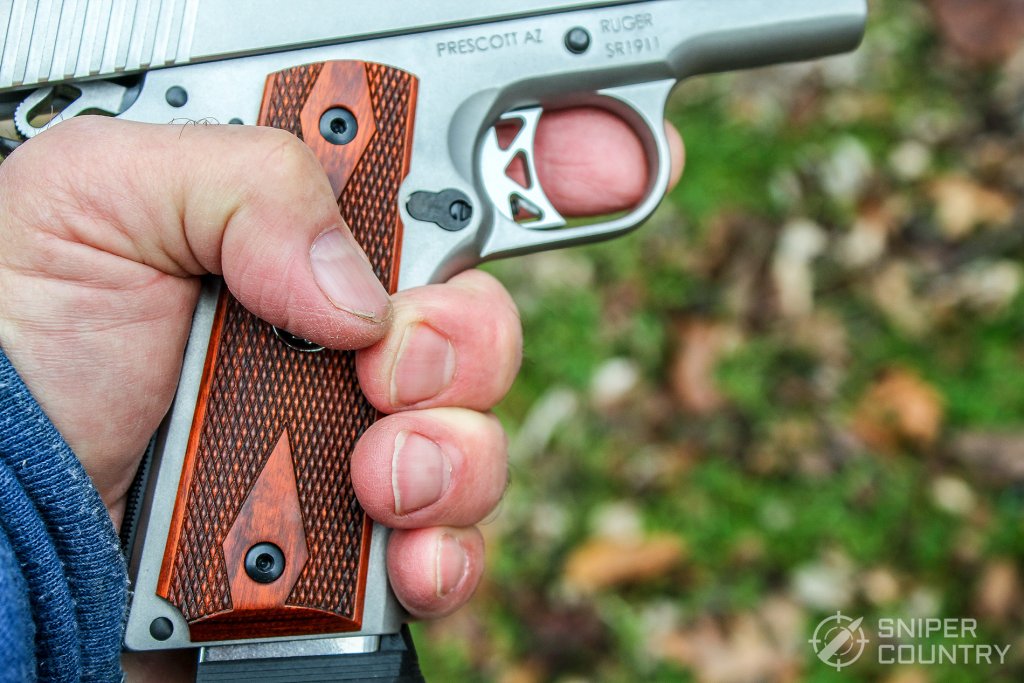
One thing about shooting a 1911 is the ergonomics. Most 1911s, if they are of traditional design (not double-stack) tend to fit the hand very well. This one was no exception. I have average-size hands, with baloney fingers (although I can reach a major 9th on a piano keyboard). Even so, the gun fit well and the magazine baseplate pad helped even more. I liked the way it felt.
Shooting the Ruger SR1911 Commander
I shot this gun with a (very) few loads. With ammo in non-existent-supply, I went with a couple of handloads and one of factory .45 ACP load, a 230-FMJ from Fiocchi. I only fired a few rounds but that was enough to get the gist of things. As always, the gun will be more accurate than me, especially with the gloomy, cloudy, snowy weather we’ve had.
How did it shoot? Really well. It has two big advantages in its corner. It’s a very-well-built 1911, and it’s a Ruger. Having the barrel and bushing made from the same bar stock on the same machine shows, in the accuracy department.
Even though my targets were average, in the hands of a top shooter, this gun would be amazing. Of course, if you wanted to have an action job done, there are only about four zillion gunsmiths out there who can do magic with a 1911. (Speaking of gunsmiths, this gun has many standard features that gunsmiths would have had to add in bygone days. Things such as extended thumb safety /slide release, Novak sights, adjustable trigger, relieved ejection port, etc. These things, and more, come standard with a Ruger 1911).
As for the trigger, it broke at about 4 ¾ pounds, with no take-up and a tiny amount of creep. With the trigger’s adjustment screw, overtravel would be a thing of the past. Overtravel had been taken out at the factory with this gun.
Here are the targets.
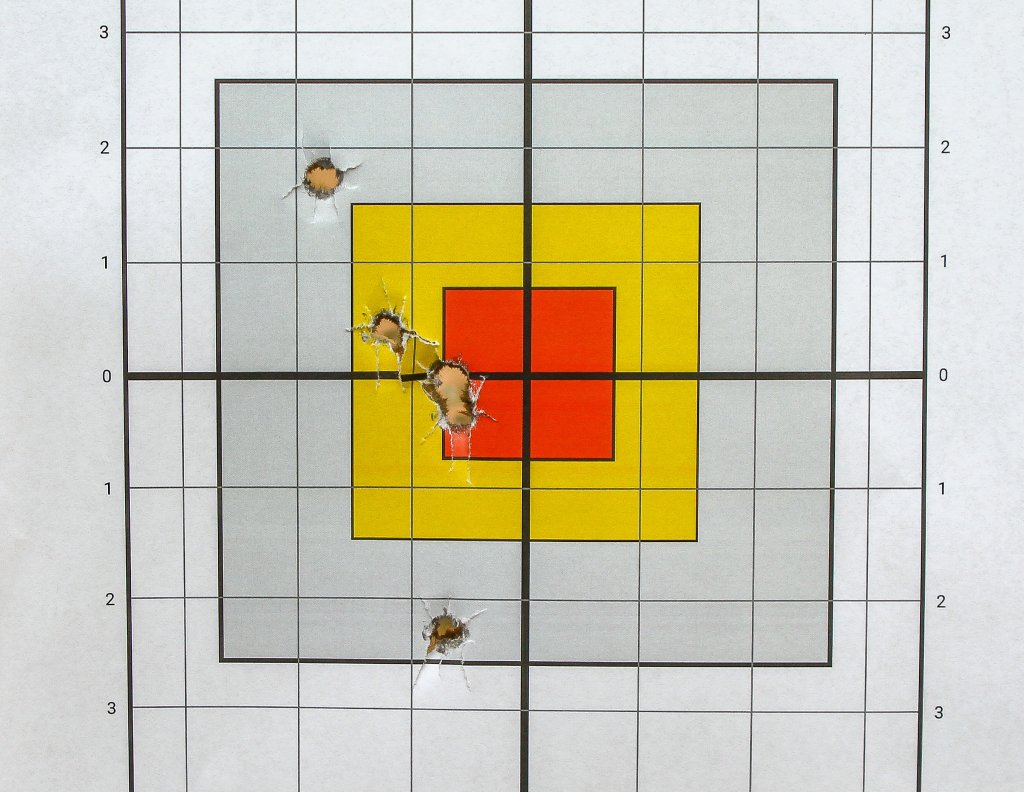
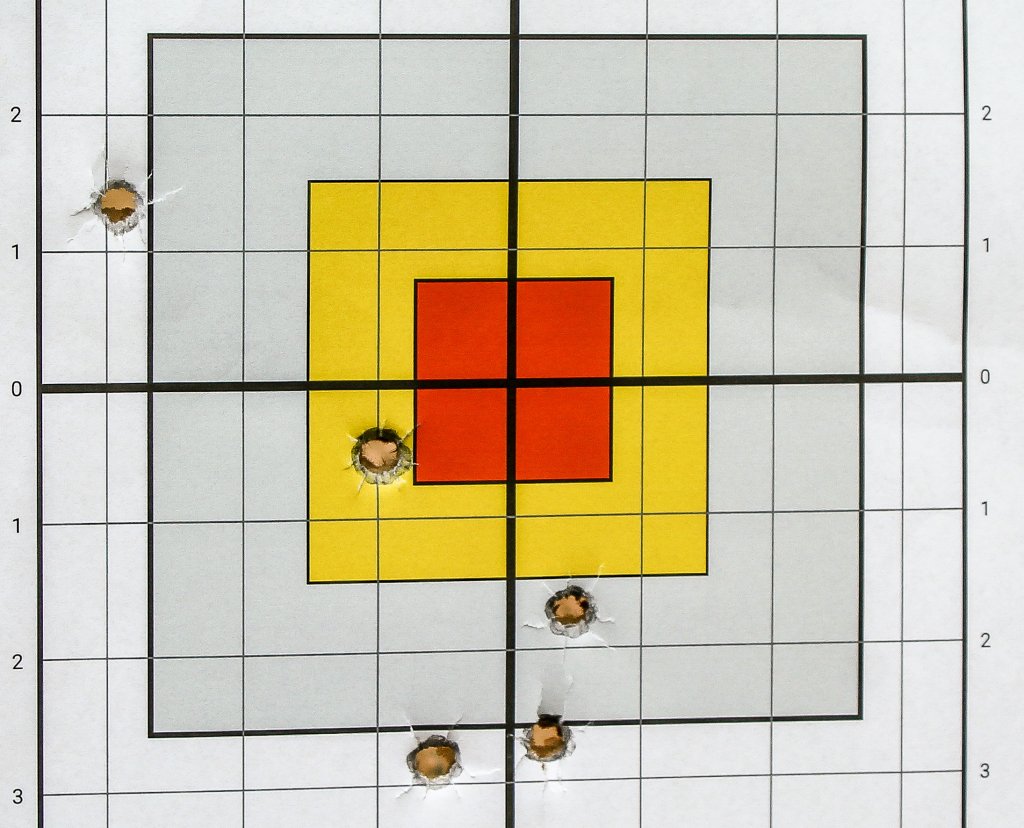
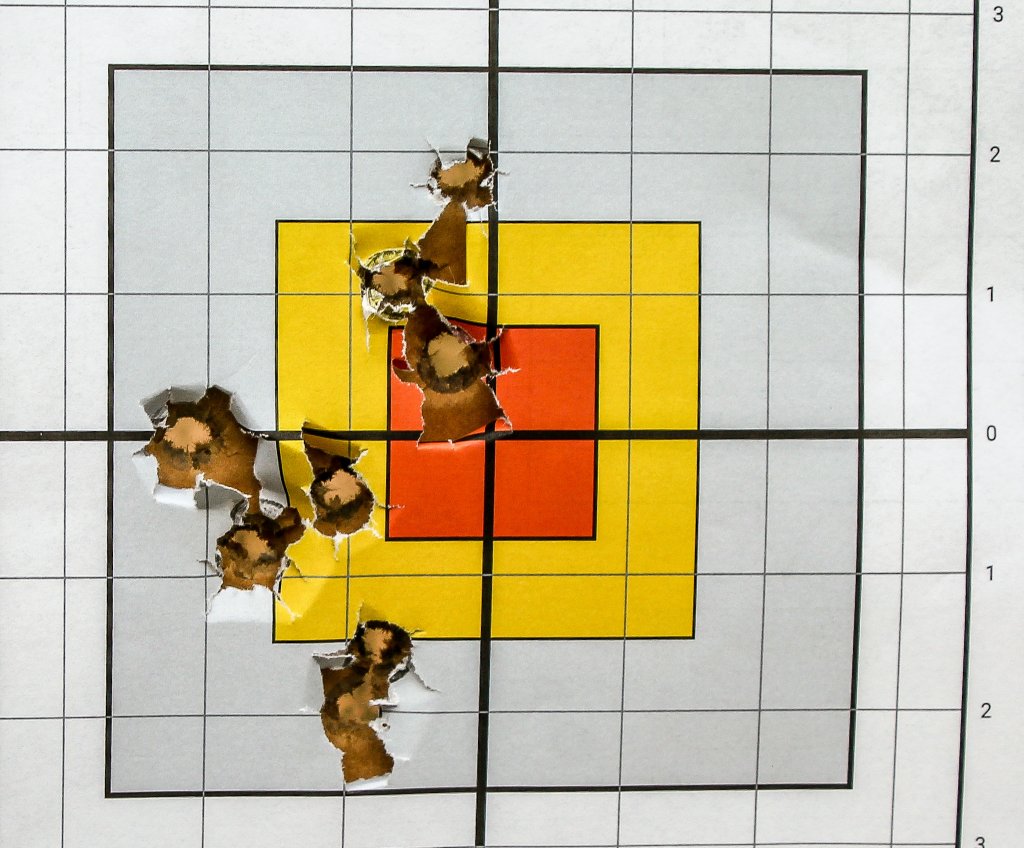
Three separate groups, but each is tight in and of itself. I say this with tongue firmly in cheek. At least this load would be something to explore.
I do think the handloads could be developed, and a real barn-burner discovered. I also like W231/ HP38 powder in target .45 loads — didn’t have time to experiment but there’s no reason that this 1911 wouldn’t like those powders (same powder, different names). Most 1911s eat cast bullets pushed by 231 with gusto. For more on reloading, bullet casting, powder coating, etc., check out the “ammo” link at the top of this page. Here’s a good place to start.
Cleaning the Ruger SR1911 Commander
After you are done shooting, you need to clean your new Ruger. I won’t go into how to tear a 1911 down, as most of you who own one already know how to do it, and those of you who are new to the 1911 world can find quick instructional videos online. Speaking of that, here’s a really good video below from American Handgunner magazine.
Pay attention to the bushing, and point the muzzle in a safe, covered direction when you attempt to reinstall the recoil spring plug and barrel bushing. Things can slip. Anyway, it’s not hard, and if you do it a few times, you’ll get the hang of it. One last tip — be careful with the slide release when re-inserting it. You can easily scratch the frame if you’re not paying attention to what you’re doing.
You may also want to take a tiny flat screwdriver (plastic preferred) and push the spring-loaded plunger out of the way without touching the frame. That can save frame scratches from happening.
Ruger SR1911 Accuracy and Reliability
This handgun has superb accuracy. The Ruger SR1911’s accuracy and effortless firing are my two favorite features. For concealed carry, however, practicality is an entirely different issue.
It’s also noteworthy for how reliable it is. I encountered zero malfunctions. Plus, my pistol was not as choosy in ammo as those of other guns.
Wrap Up
You can get this Commander in stainless steel (like this one), in two-tone, in a lighter-weight version or in 9mm. If you are looking for a platform 1911 to customize, here you go. Or, if you just want to add a medium-expensive (around $1000) 1911 to your collection, this would be a good choice. This would also be a good gun to compete with, in certain classes of competition.
Unfortunately, the SR1911 is far too bulky to carry. However, I like its timeless and elegant design. It is also fun to shoot and won’t break the bank. It is a blast to take to the range thanks to its smooth operation and pinpoint accuracy.
If you’re a 1911 fan, please chime in below (or if you’re not, for that matter). As always, keep them in the black and stay safe.

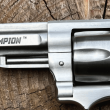
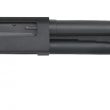
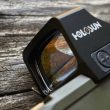
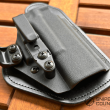
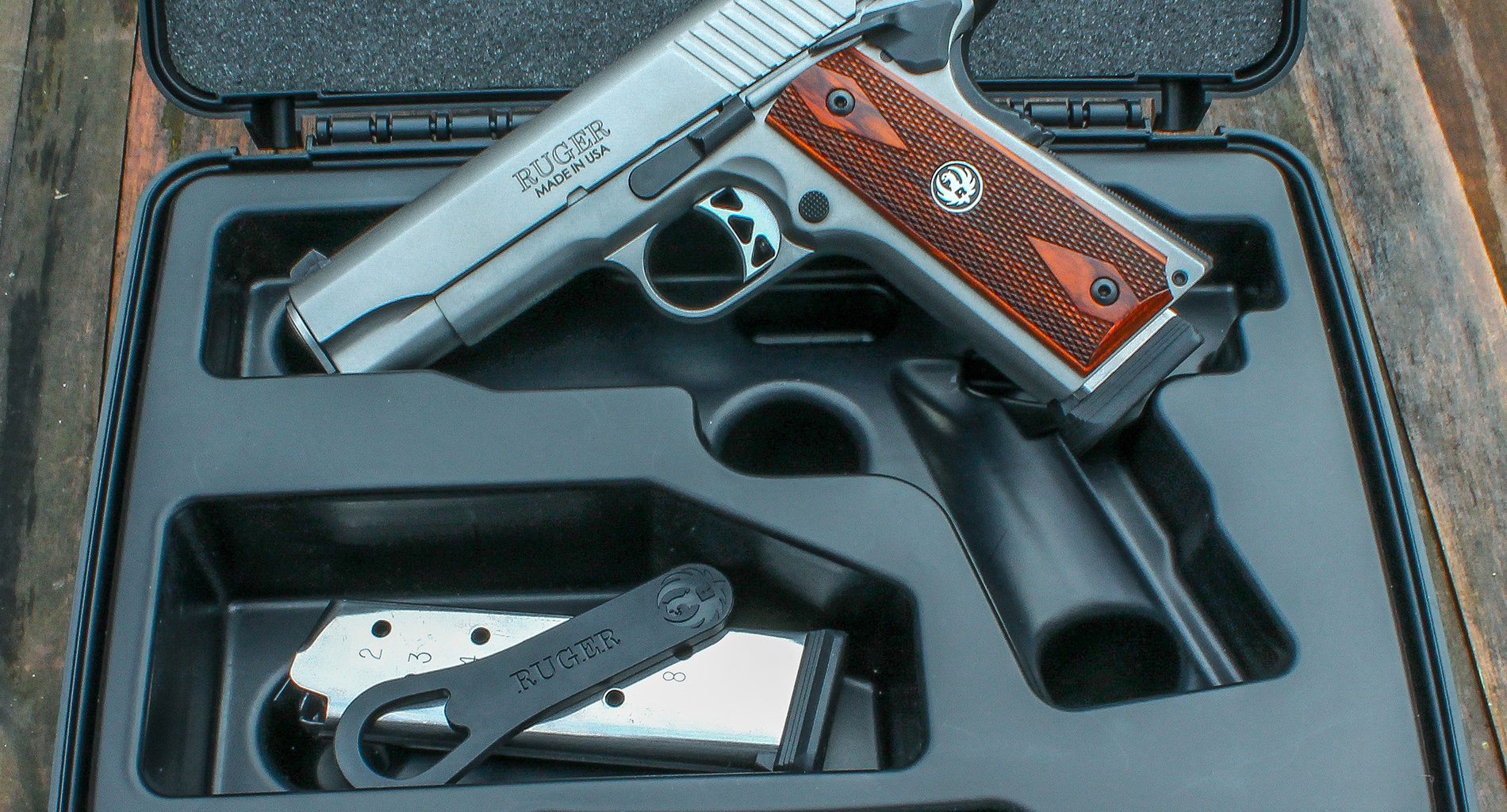
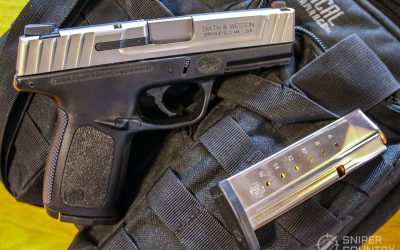
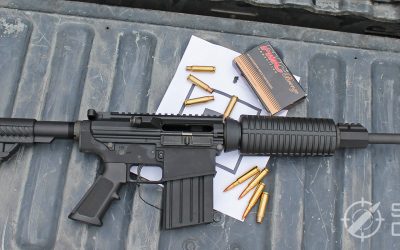
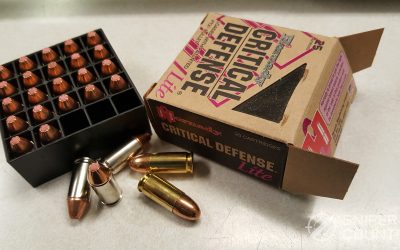
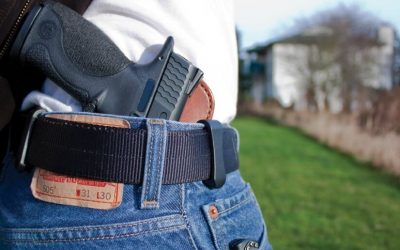
![9mm Glock Models [Ultimate Guide]](http://161.35.252.213/wp-content/uploads/2018/10/Glock-17-vs-Glock-19-vs-Glock-26-vs-Glock-41-vs-Glock-43-WM-400x250.jpg)
![Handgun Caliber Chart [2025 Ultimate Guide]](http://161.35.252.213/wp-content/uploads/2018/10/Handgun-Caliber-Comparison-400x250.jpg)
![Rifle Calibers [Ultimate Guide]](http://161.35.252.213/wp-content/uploads/2018/12/Header-1900-400x250.jpg)
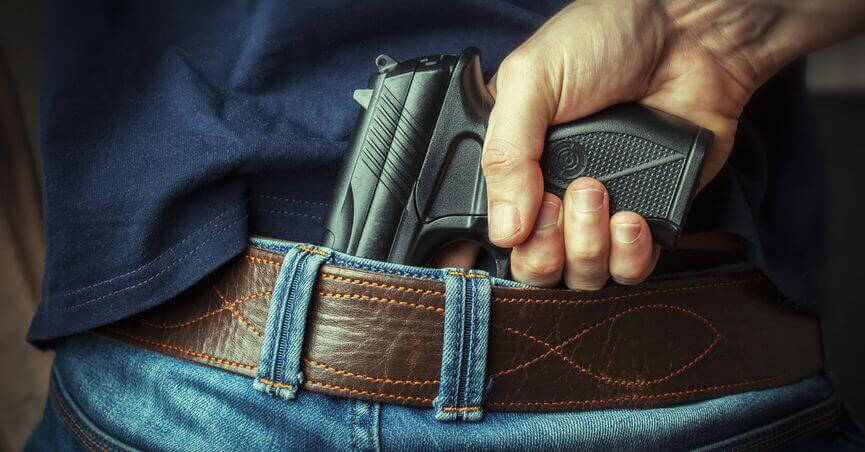
![Ruger American Pistol Review – One Nice .45 [hands on]](http://161.35.252.213/wp-content/uploads/2021/02/title-260x195.jpg)

